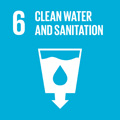- Docente: Giuseppina Montante
- Credits: 6
- SSD: ING-IND/25
- Language: Italian
- Teaching Mode: Traditional lectures
- Campus: Rimini
- Corso: First cycle degree programme (L) in Chemistry and Technologies for the Environment and Materials (cod. 8514)
-
from Feb 17, 2025 to Apr 15, 2025
Learning outcomes
The purpose of this course is to present the main operations for wastewater and polluted air treatment. The basis working principles of each process are discussed and simple quantitative methods of study of selected apparatus and plants are covered.
The goal is to provide the students with basic tools for understanding and making previsions about the main operations adopted for environmental applications as well as with the main features of typical equipment of wastewater and polluted air treatments plants.
Course contents
Prerequisites
- Algebraic, trigonometric, exponential, logarithmic functions. Fundamentals of calculus. Linear differential equations. Integrals in one real variable (Mathematics).
- Physical quantities and relationships that bind them, main units of measure. (Physics).
- Chemical reactions and their balance. Interpretation of pressure and temperature of a gas- Mixtures of gases and Dalton law of partial pressures (General and Inorganic Chemistry).
- Basic thermodynamic applications to chemical processes. Definition of thermodynamic system (open, closed, isolated, adiabatic). First law of thermodynamics. Equation of state of an ideal gas. Mixtures of ideal gas and Dalton's law (Physical Chemistry).
- Material and energy balances for chemical equipment and plants. Fluid flow. Hear and mass transfer mechanisms (Introduction to Unit Operations in the Chemical Industry).
Contents
1. Air Pollution Treatments.
Principles, working characteristics and design elements relevant to
the following operations: dust removal by settling chambers,
cyclones, bag filters, electrostatic precipitators, scrubbers;
vapour and gas compound removal by chemical absorption, VOC
incineration, condensation.
2. Wastewater treatments. Main operations in domestic and
industrial effluents treatment plants. Principles, working
characteristics and design elements relevant to the following
operations: physical treatments, chemical treatments, solid-liquid
separations, biological treatments. Sludge
handling.
Readings/Bibliography
- L. Bonomo, Trattamenti delle acque reflue, McGraw-Hill, 2008.
- Metcalf & Eddy, Wastewater Engineering: Treatment and Resource Recovery 5th Edition, 2013
Further possible readings::
- W.L. McCabe, J.C. Smith, P. Harriott, Unit Operations of
Chemical Engineering, 5th edition, McGraw-Hill, 1993.
Teaching methods
Lectures carried out in class.
Assessment methods
The final assessment will be via an oral exam aimed at testing the understanding of the treatment operations and of the equipment considered during the lectures. Moreover, the capability to select a suitable technique for accomplishing a specific operation and to critically discuss a particular operating condition or a design problem will be verified.
Teaching tools
Typically, lectures are carried out adopting the blackboard. The sketches of the apparatuses and the process schemes are shown by a projector and distributed in class during the course.
Office hours
See the website of Giuseppina Montante
SDGs


This teaching activity contributes to the achievement of the Sustainable Development Goals of the UN 2030 Agenda.
